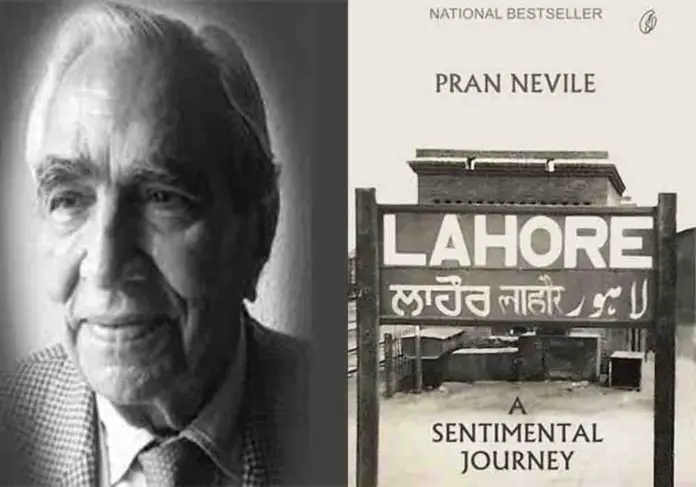I happen to be a citizen of Lahore. The place where I reside is Sant Nagar. It is also known as Sunnat Nagar, since some people are not ready to accept the fact that the place where they belong to is named after a Hindi language word. Therefore, they have converted the prefix ‘Sant’ into ‘Sunnat’, without any guarantee of whether the sunnah (way) of the Prophet (PBUH) will be followed in the real sense or not. However, we better not go into the depth of this matter, for this intolerant attitude is not one sided. A few days back, Nandita Das, an internationally recognized actress of India as well as a social activist, had shared an article on her Facebook page written by Shoaib Daniyal, which said that VK Singh, the minister of state for external affairs of India has demanded that the name of Akbar Road of Delhi be changed to Maharana Pratap Singh Road.
Sant Nagar, or Sunnat Nagar, is not what one can call a posh area. It is not a slum either. It lies between both. Where educated husbands and wives attired gracefully are found heading towards their workplaces every morning, there, at the same time exist illiterate couples who are bent upon expanding their families every year. While some children daily go to school and return exhausted at the time of noon, some are found squatting all day to play marbles and also risking their lives with firecrackers on holy nights. Along with a branch of each expensive bakery, one finds at the corner of every street of Sant Nagar, a general store. In not so unclean alleys, there stand houses built in accordance with the latest trends in architecture. There dwell people who alight from rickshaws a few steps from their homes, and there live tycoons who, since they live in comparatively wider streets, are seen parking their cars in garages.
What is attractive about Sant Nagar are some of its time-stricken houses which are beautifully built and are a reflection of the old times in which they were constructed, because on almost all the facades of these houses, Hindi language has been carved, incomprehensible for the likes of me, and therefore, arousing curiosity. These houses are also characterized by their protruding balconies, on the parapets of which women in the art movies of the subcontinent are found spreading clothes in order to dry. These houses always attracted me, since it has been more than fifteen years that I have been living here, but never did I know the years in which they were built, until I came across Pran Neville’s book Lahore: A Sentimental Journey. Pran Neville, an author of Indian art and culture, a former student of my university, and a lover of Lahore, happened to launch the revised edition of his aforementioned book at Government College University’s auditorium. After having listened to what he had to say regarding the book, when the students and teachers were walking out of the auditorium, a small stall stood waiting for them from where they could buy the book. Along with some of my friends, I bought it, but unfortunately was not able to get it signed by Pran Neville.
However, I brought it home and was skimming through its pages in order to find a piece on his student life, when my eyes caught sight of the following lines:
“By the early 1930s, Lahore, with its growing prosperity and economic activity, had expanded in all directions. New residential areas were developed in different parts of the city, such as Krishan Nagar, Sant Nagar, Ram Nagar, Ram gullies, Krishna gullies, Gowalmandi, Gandhi Square, Nisbet Road, Mozang and Quila Gujar Singh.”
These lines made me recall the carvings I had been observing since childhood. Thanks to Pran Neville, that I came to know that they are seventy five to eighty years old. Since Neville said that back in those times, Lahore was prospering economically, I wondered what my area would have been like. I wondered about those affluent families, who would have arrived here and constructed well-built haveli-like houses in which people still dwell. Well-built I have said because even after almost a century, those houses, though with scraped walls, stand. Sant Nagar would have been a neat, clean, less populated area belonging to rich people who constructed their massive houses in the times of growing economic prosperity. Since its old name tells that it solely belonged to the Hindus, there would have been a uniformity in its architecture. All the houses would have been of the same sort, the sort discussed above comprising of Hindi language carvings.
Krishan Nagar, a bazar now, is a few kilometres ahead of Sant Nagar. Krishan Nagar is characterized by small, contiguously built shops fraught with their respective stuff. When Krishan Nagar comes to telling about it being a post-colonial subject, it does so by making the visitors raise their eyes to the top of every building. The upper portions are built in the same way as the aforementioned old houses of Sant Nagar, while the lower portions have been renovated according to modern styles. Most probably, residents living above have rented the lower portions to shopkeepers. A varying culture is not visible in different sorts of buildings, but makes itself conspicuous in a single building. Halves of what people built many years back have remained.
Now that the names of the areas have started to change, and the houses are being moulded into newer styles gradually, it is feared that in the coming days, these houses might be made to collapse completely. The renovation of houses is still, not a great deal, since a lot of years have passed since the partition of Hindus and Muslims, but the changing of names reflects an intolerant attitude, depicting that even after so many years, the two groups have not progressed and are still focusing on their animosity and are devising ways to make it even bitter. If this keeps on happening, nothing may remain of the past of Sant Nagar or Krishan Nagar. It is only due to the likes of Pran Neville, who venerate art and culture that people get to know a little about their roots, like I got to know about the place where I had been residing since childhood. The level of intolerance of people who are unlike the artists must not raise to such an extent so as to completely abolish each and every sign of something old, for people will not be left with a past to be proud of, for according to Faiz Ahmad Faiz, culture must be territorial as well as historical.
Let’s pray that some remnants remain to tell histories, whether interesting or not. Let’s pray that a little bit of tolerance remains, as well as love, like Gulzar says:
Aankhon ko visa nahi lagta
Khwaabon ki sarhad hoti nahi
Band aankhon se roz mein sarhad paar chala jata hun milne
Mehdi Hassan se
Nazar mein rehte ho jab tum nazar nahi aate
Ye sur bulaate hain jab tum idhar nahi aate
In lakeeron ko zameen hi pe rehne do
Dilon pe mat utaaro







